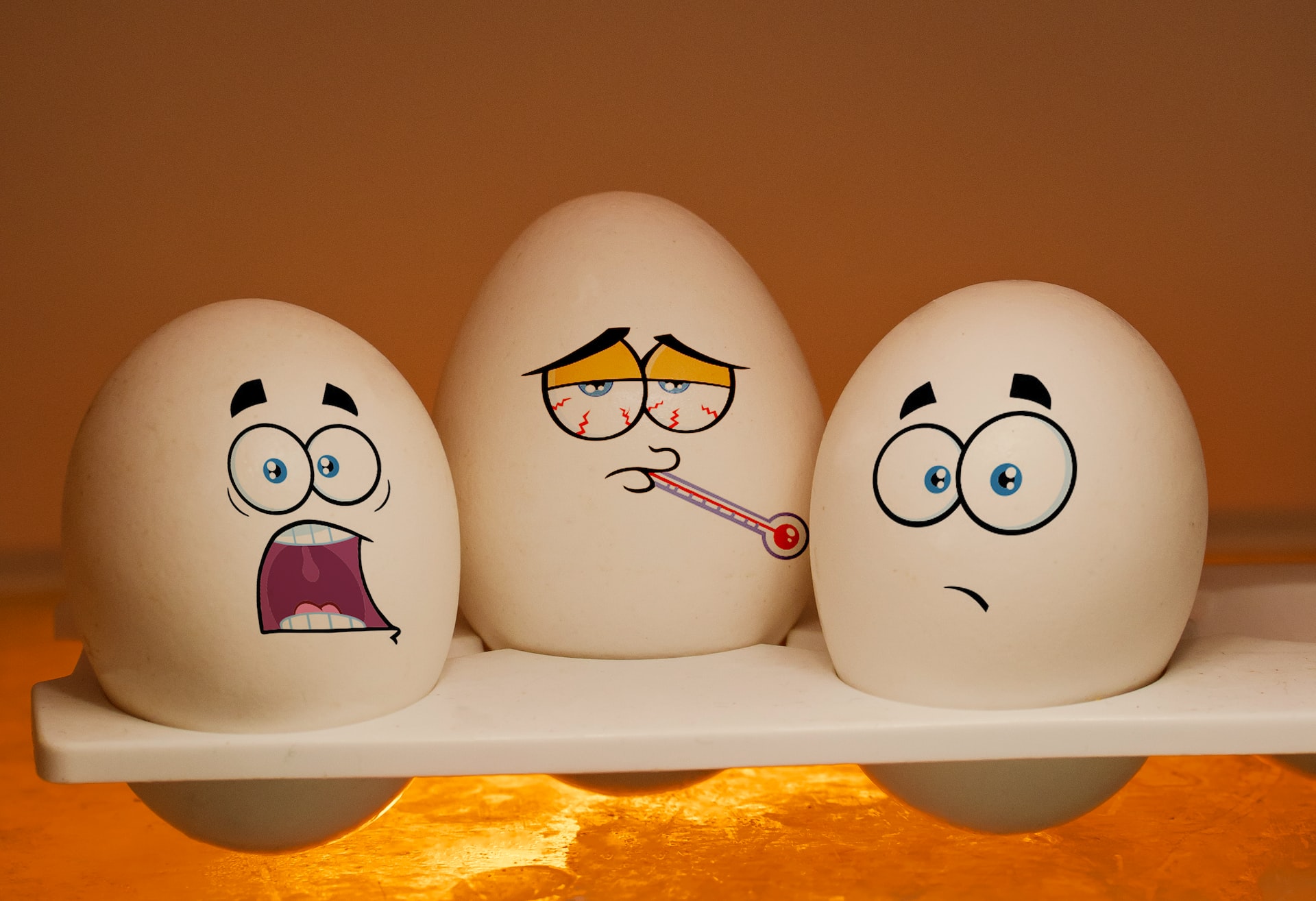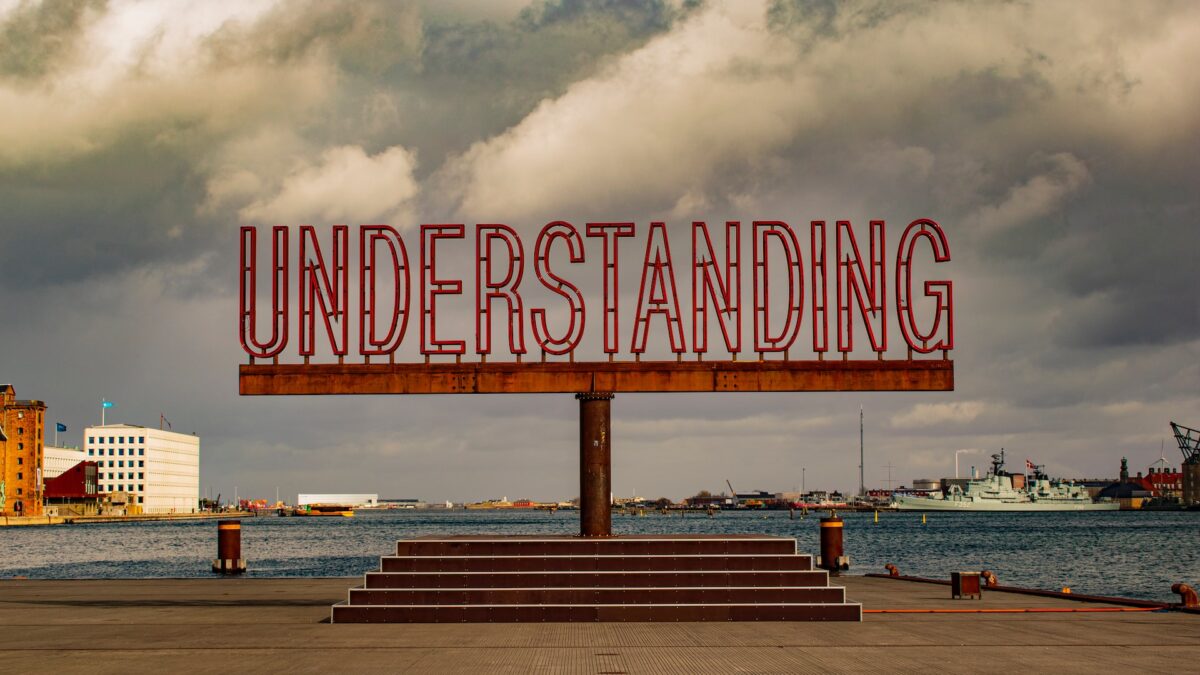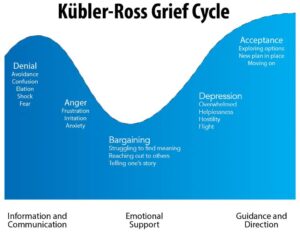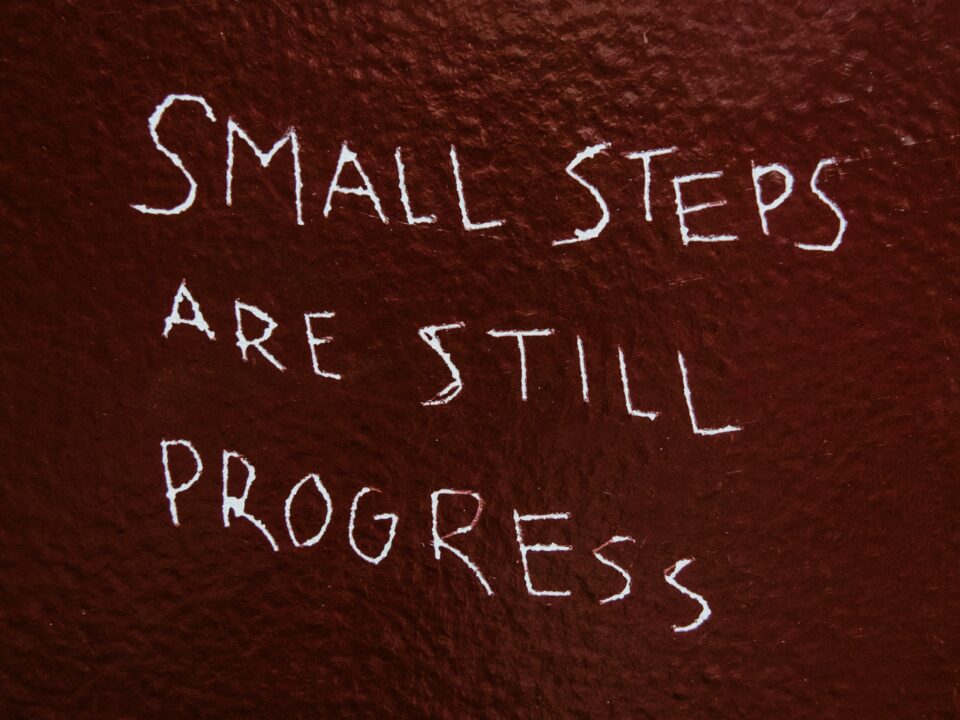
Three steps to build rapport in a customer service environment
November 10, 2022
Managing people through change
January 5, 2023Understanding how we react to change
Cutting costs. Efficiency gains. New technologies. Restructuring. New leadership. Whatever form it might take, change is a given in most organisations as we navigate challenges and grasp opportunities in front of us.
But no matter how well we’ve planned organisational change, understanding and effectively dealing with how people respond is key to effective implementation.
In fact, research from McKinsey & Company found 70% of change programmes fail, pointing out common pitfalls are largely due to “employee resistance and lack of management support”.
Here, we explain the Kübler-Ross Change Curve we use in our training. This will help you understand the different emotional reactions you and your team might experience in order to effectively deal with and embrace change.
Understanding the change curve
When change happens many people initially see it as loosing something. In fact, the change curve model we use in our training was developed by Elisabeth Kübler-Ross as a tool to depict the emotional stages people go through when experiencing grief – shock, denial, frustration, depression, experimentation, acceptance and integration. It’s a model many organisations now use to understand people’s reactions to change in a work environment.
Here’s what you’re likely to observe as a team goes through the change curve, helping you to spot what stage your people are at.
Shock
People’s initial reaction may be one of surprise or shock. They may feel numb. Some may only take in snippets of information, or even none at all.
Denial
The next stage is one of disbelief; denial anything has happened. Or people may hold the belief it won’t affect them.
Frustration
As people digest information, they start reacting to what’s happening. Anger or negativity can come out. Many struggle to see how the change will result in improvements. You may hear misinformation or people pushing opinion as fact. Some may even think they can stop or delay the change. You can see how this stage could be quite damaging.
Depression
This is where the mood goes down. There’s no looking forward to the benefits and opportunities this change might bring.
There’s a lack of energy and motivation. People do the bare minimum. There’s no generation of ideas. They cling to old ways of working. You might see people go off sick due to stress.
Be mindful some may perceive the change as not affecting managers and leaders in the same way, creating a ‘them and us’ scenario.
Experimentation
People start to move forward, potentially in small steps. There is likely to be questioning about what exactly needs to happen and how it should be done.
The change is still new remember, so people may make mistakes or take two steps forward and one step back. But overall people are processing what this change might look and feel like.
Decision and acceptance
This is the stage where people start to move on and are prepared to have a go. They’re more proactive. Energy levels go up. People try new things, learn how to work in new ways, and contribute suggestions and ideas of what could work.
Be aware, for some this might be reluctant acceptance, thinking ‘I’m going to have to accept this whether I like it or not’.
Integration
People have healed and adapted to new ways of working.
However, be mindful if things are perceived to not quite work out as expected, or more change is added, people may slip back.
Spoiler alert; not everyone moves through change at the same pace
Within your team, people will progress – and sometimes regress – through the change curve at varying paces. This can be influenced by past experiences, what motivates them as individuals, and what’s happening in their personal life – if things are good at home, you may embrace change at work more readily.
Some skip stages altogether. Some progress only to slip backwards if they feel overwhelmed. And some might be invested from the start, getting straight into the experimentation stage.
People who get stuck in depression can be destructive in the team, doing what they can to prove the change won’t work. It’s worth being very alert to colleagues who seem stuck in this phase.
Don’t forget if you’ve been involved in developing the change, or been privy to information earlier, you’ll have spent weeks if not months getting your head round it. By the time you talk to your team, you will have already been though some of these emotions; your team will be starting from scratch and may feel they’ve been kept in the dark.
Applying the Kübler-Ross Change Curve
- Firstly, it’s important to understand the Kübler-Ross Change Curve and people’s emotional reactions to change.
- The model will help you understand people aren’t necessarily resisting change, its just their experiences are very different meaning their readiness or willingness to embrace change will vary.
- If you’re a leader or manager, applying this model will help you understand people’s emotions better so you can support and coach people through the change journey to influence a more positive outcome. Read our blog on supporting your team through organisational change. (add in this last sentence with link when 2nd blog live).
Prepare yourself
Don’t forget there are things you can do to improve your own resilience. Investing in your ability to deal with these issues in a positive and constructive way is critical to not just move on, but to learn and grow from these experiences.
Now might also be a good time to utilise reflective questioning and share expectations with your team to identify some key questions.
Cube Learning and Development delivers bespoke, personal coaching programmes to help you manage the change. For a no-obligation chat about this and our other training, call Chris Burton on 07879 602002.
Feature image courtesy of Unsplash – [Zuzana Ruttkay]





